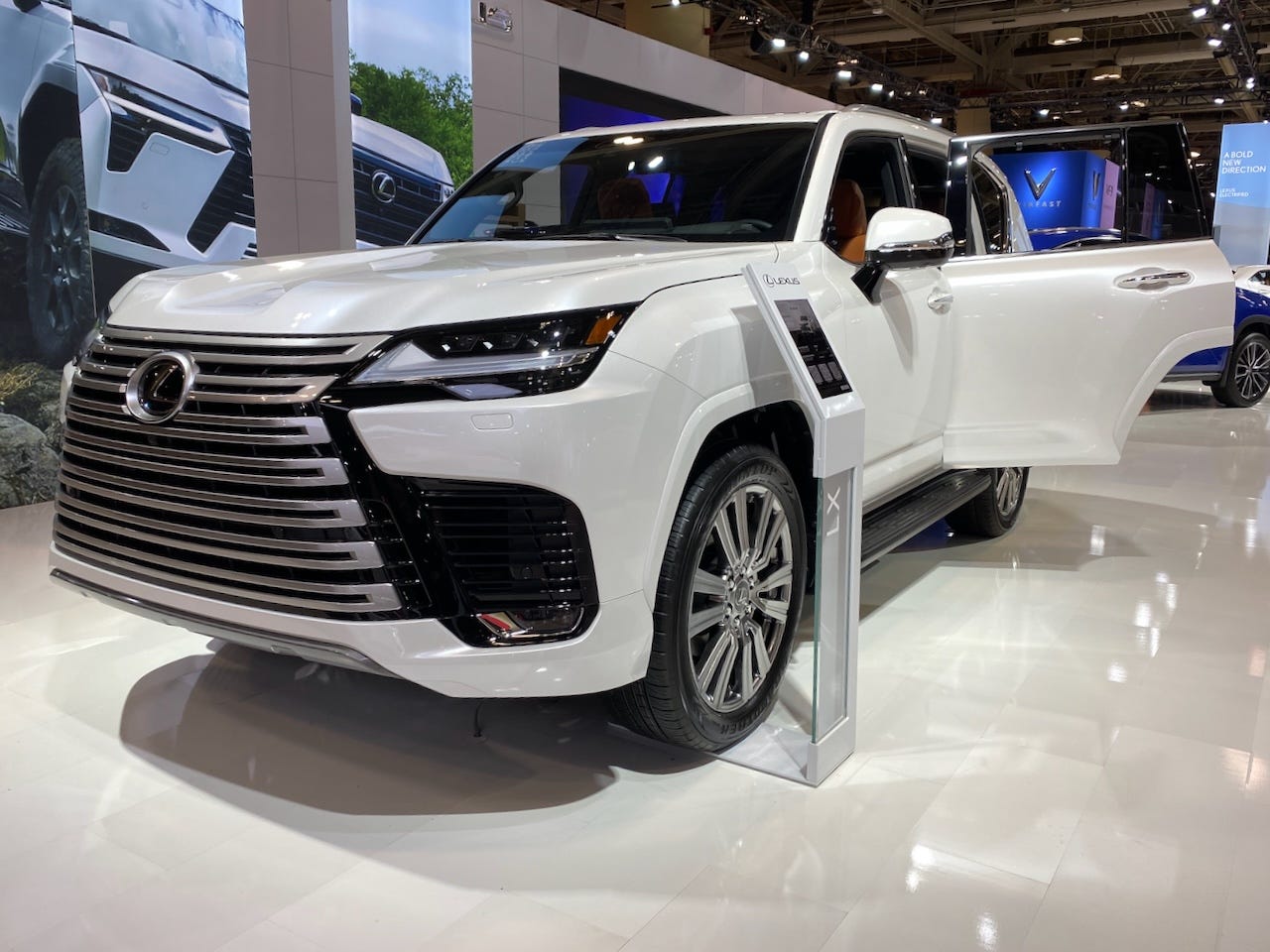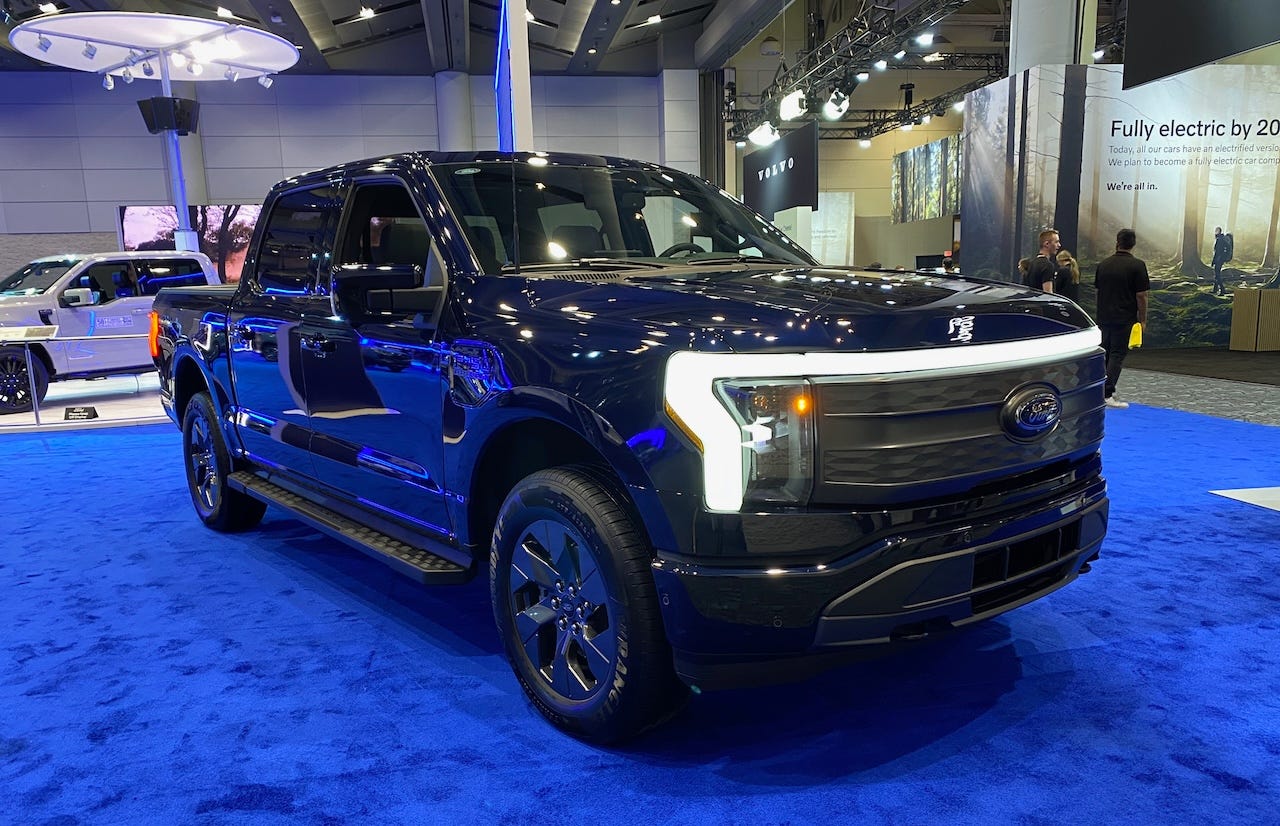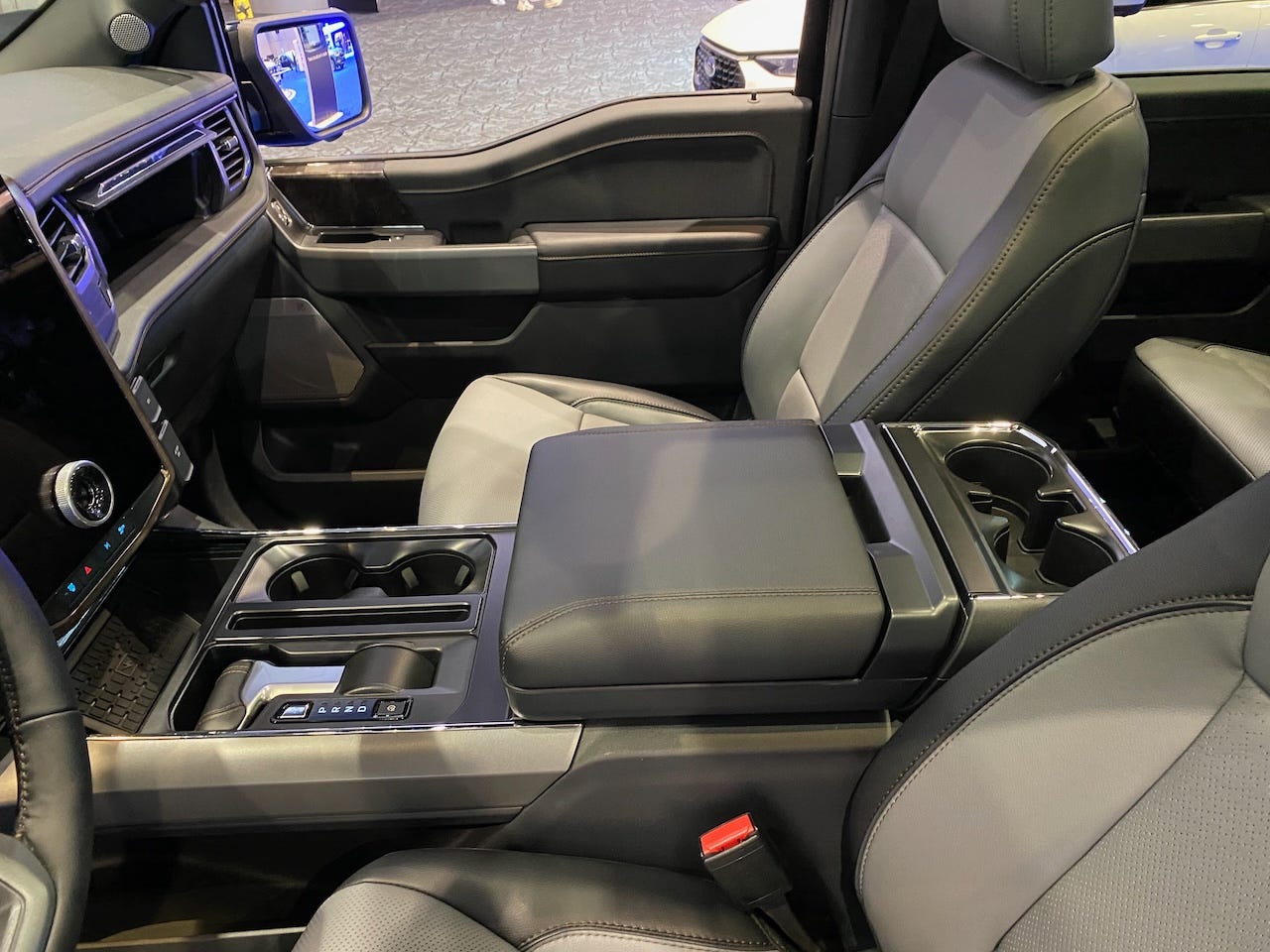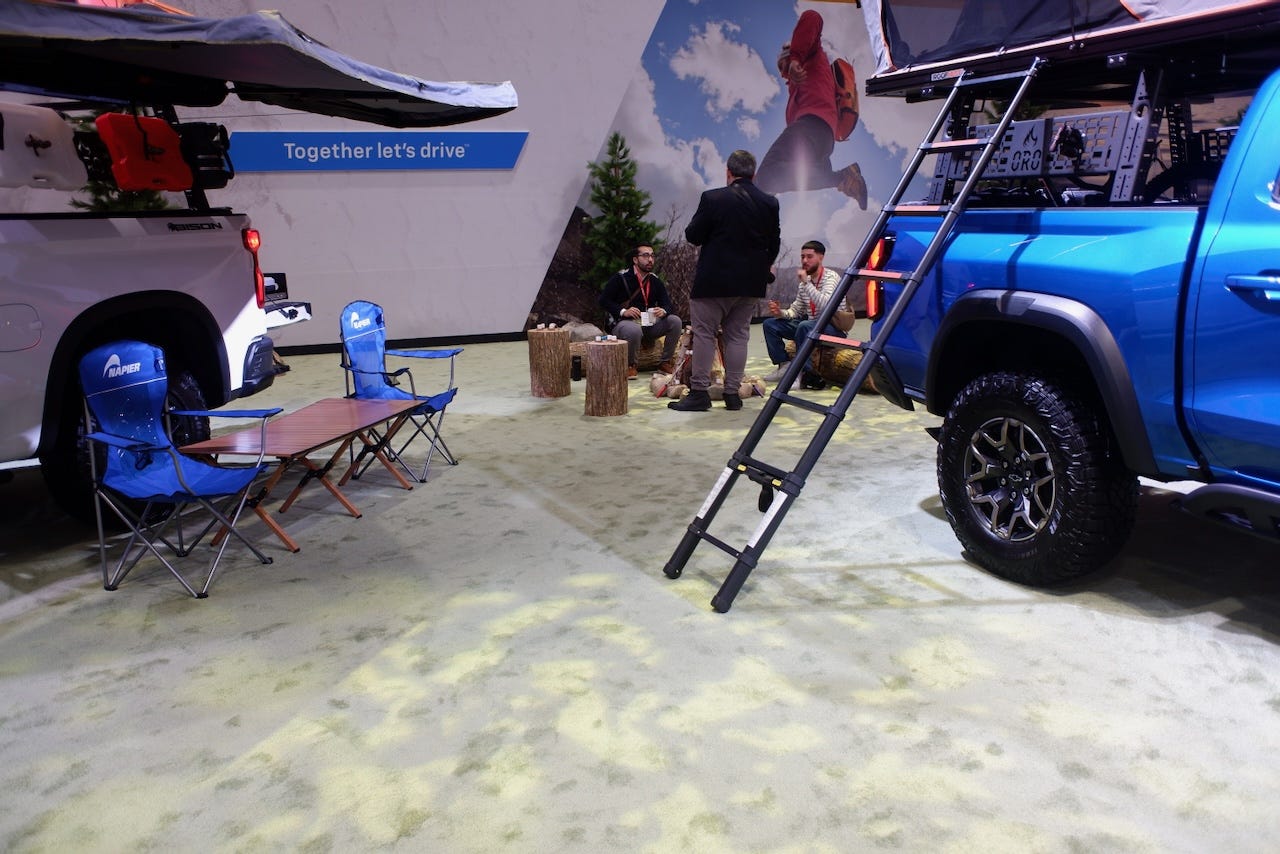Car and truck front ends reach new heights
After reading a recent study on the danger of front-end vehicle height, these look even worse.
Every year I take my tape measure to the Canadian International Auto Show to see how high the truck and SUV front ends are, and we have a new winner: The GMC Sierra 1500 Denali Ultimate. The hood tops out at 5’-1” (154 cm), just three inches shorter than me. I have seen higher trucks, but they are usually jacked up in the aftermarket. This is drive-off-the-lot legal.
It used to be the Dodge Rams that won the prizes for the most intimidating and scary front ends, but GMC wins the GETOUTOFMYWAY prize this year.
The pickup trucks are the scariest, but the luxury SUVs are close behind. This C$158,000 Lexus clocks in at 4’-7” or 139 cm. I don’t usually use cm or centimetres- architects use meters and millimeters because too many units get confusing. But Justin Tyndall of the University of Hawai’i Economic Research Organization does, and he just dropped a study in Economics of Transportation, which looked at The effect of front-end vehicle height on pedestrian death risk.
“I combine data on pedestrian crashes and vehicle size measurements in a novel way to directly test for the impact of vehicle size on the probability a pedestrian dies in a crash. I confirm evidence from past studies that larger vehicle types raise the probability a pedestrian dies in a crash. I provide the first evidence directly testing for the role of front-end vehicle height. I find that high-front-end vehicle designs are particularly culpable for the higher pedestrian death rate attributable to large vehicles. A 10 cm increase in the front-end height of a vehicle increases the risk of pedestrian death by 22%.”
Tyndall calculates that 509 lives could be saved each year of hoods were capped at 125 cm (4’-1”), a bit less than that Lexus, and if they were capped at 110 cm (3’-7”) it would save 1350 lives. These kinds of heights are standard in European working vehicles like the Ford Transit, shown next to a Silverado in the photo above that cost me no end of grief on Twitter when I said that’s what all trucks should look like.
Tyndall notes that pickup truck drivers were 63% more likely to kill pedestrians and surprisingly, full size SUV drivers were twice as likely, and that “The burden of pedestrian deaths is not shared equally. I find that women, children, and the elderly experience the largest deterioration in safety from larger vehicles. Other research has shown that racial minorities carry a larger burden of pedestrian crash risk.”
He also notes that “The shift towards electric vehicles is projected to make vehicles heavier still, as the batteries needed to power the vehicles add significant weight. If a strong relationship between pedestrian fatalities and vehicle weight exists, the number of fatalities attributable to vehicle size will likely continue to rise in the coming years.” However he found the impact of weight was small compared to that of front-end height. Its an interesting study following closely on the IIHS one I covered earlier in New studies find SUVs and pickups with high flat fronts are 45% more likely to kill.
It will be interesting to see where the Tesla Cybertruck fits into this equation. I couldn’t get close enough to measure how high that front end is, but it certainly rates high in the intimidation factor. I don’t know whether that knife-edge nose is more dangerous than the grilles on the pickups that look like the microplane/zester my wife uses to shred food.
Speaking of food, I recently wrote about how so many people are eating in their cars. Now the pickup trucks even come with dining rooms. The F-150 Lightning has this huge centre console between the two front seats. Note how the gear shift folds flat,
And the armrest opens up to be a decent-sized table. I am certain some drivers will be angry that they can’t open it up while driving; the truck has to be in park.
The big sales justification for pickup trucks and SUVs this year seems to be, “I need it for camping.” Chevrolet even set up an electric campfire. It’s a sort of lifestyle halo hanging over the whole show; I almost got knocked over by two Subaru employees carrying a giant paddleboard to their booth, although Subaru has been doing this for years, I fell for it and bought an Outback in 2000. I suppose the idea is that sitting inside a four ton truck is OK if you are using it to go to do something healthy and active.
The wonderful little Ford Maverick hybrid pickup truck has a neat tent that covers the truck bed, although I don’t know where you put your stuff if you have to keep the bed empty for sleeping. This is the truck that Ford can’t make enough of - small, reasonably priced, and hugely popular. No word on when it is going all-electric.
I think the rigs with ladders and beds in the sky make more sense than sleeping in the truck bed.
The Ford Bronco rig is ridiculously huge, you would take up the whole car just storing it.
There were lots of e-bikes at last years show, which seemed to be pushing everything electric. This year, only two in the corner of the Porsche booth. They looked rather sad, not even any signage, just a QR code.
The only other bikes to be seen were on top of SUVs along with surfboards and kayaks, even though you would need a ladder to get them up on top of this Cadillac SUV. Everyone is pushing the active lifestyle button, but Cadillac? It doesn’t work for me.
In the end, the only thing I lusted after at the auto show was the new Mercury electric outboard. There was nobody in the booth (it’s media day) and I played with it in the tank here; it is quiet and powerful and gorgeous.
Or maybe the classic Porsche 356 Zagato. I’ll take the Porsche. It has a really low front end, and it’s prettier than a pickup truck!




















Another advantage (not!) is that the headlights are higher, so if one still (gasp) drives a small car (we have a Chevy Bolt EV and a Honda Fit) the lights are blinding even if not on high beams.
I will agree with you about the Porsche.